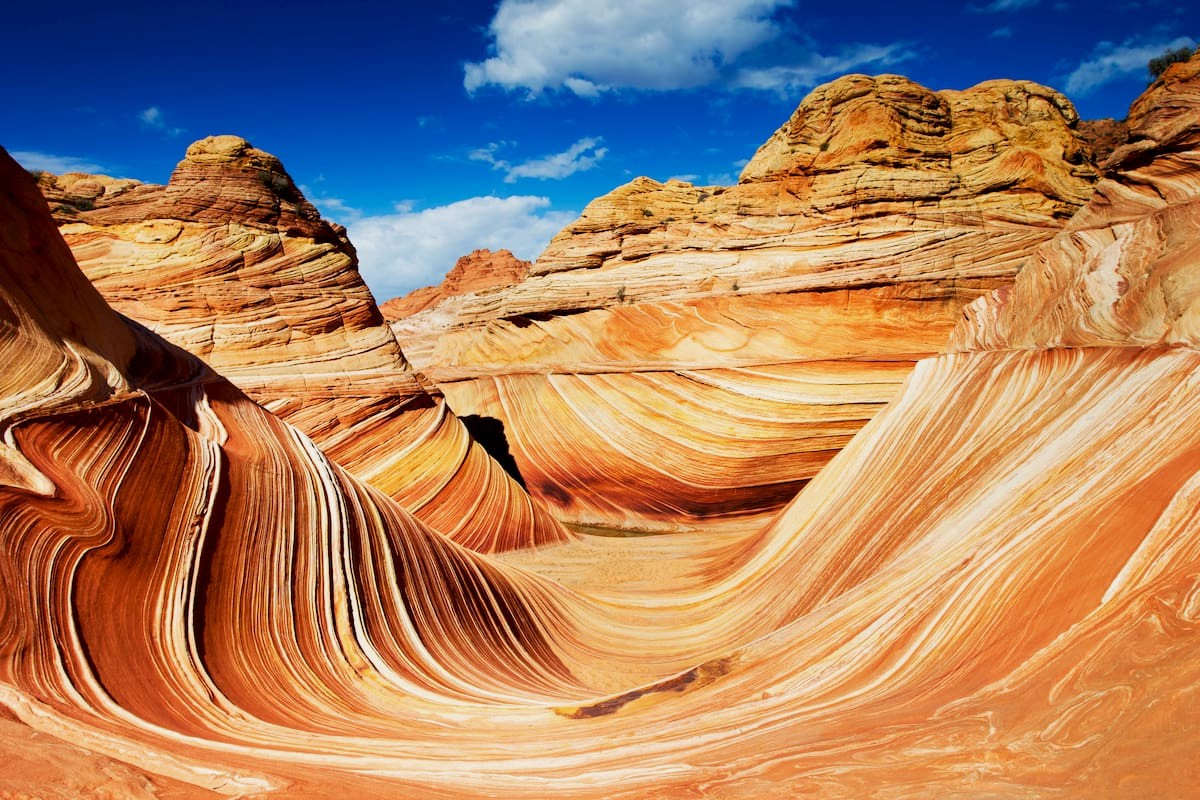Mysteries Of The Colorado Plateau’s Sandstone Formations

Have you ever wondered how the sandstone formations of the Colorado Plateau came to be? These stunning natural structures, like the famous Antelope Canyon and Monument Valley, didn't just appear overnight. Over millions of years, wind, water, and time sculpted these breathtaking landscapes. The Colorado Plateau stretches across four states: Arizona, Utah, Colorado, and New Mexico. Each area offers unique views and experiences. From the towering spires of Bryce Canyon to the wave-like curves of The Wave in Arizona, the sandstone formations tell a story of Earth's history. Ready to learn more about these natural wonders? Let's dive in!
The Enigmatic Beauty of the Colorado Plateau
The Colorado Plateau is a vast, elevated region in the southwestern United States. Known for its stunning sandstone formations, this area offers a unique landscape that has captivated visitors for generations. Let's explore some of the most mysterious and awe-inspiring sandstone formations on the Colorado Plateau.
Antelope Canyon: Nature's Masterpiece
Antelope Canyon, located in Arizona, is a slot canyon known for its wave-like structure and light beams that shine down into the openings of the canyon, creating a surreal atmosphere.
- Upper Antelope Canyon: Famous for its narrow passageways and light beams, this section is a photographer's dream.
- Lower Antelope Canyon: Slightly less crowded, it offers equally stunning views with its twisting and turning rock formations.
The Wave: A Surreal Sandstone Formation
The Wave, situated in the Paria Canyon-Vermilion Cliffs Wilderness, is a sandstone rock formation that looks like a wave frozen in time. Its unique shape and vibrant colors make it a must-see.
- The Wave: Known for its undulating forms and rich hues, this formation is both challenging to access and highly rewarding.
- Second Wave: Located nearby, it offers a similar but less crowded experience with equally mesmerizing patterns.
Monument Valley: Iconic Sandstone Buttes
Monument Valley, straddling the Arizona-Utah border, is famous for its towering sandstone buttes that have been featured in countless films and photographs.
- West Mitten Butte: One of the most recognizable formations, it resembles a mitten with its thumb-like projection.
- East Mitten Butte: Standing opposite West Mitten Butte, it offers a mirror image and equally stunning views.
- Merrick Butte: Named after a prospector, this butte adds to the iconic landscape of Monument Valley.
Arches National Park: A Wonderland of Natural Arches
Arches National Park in Utah boasts over 2,000 natural stone arches, each with its own unique shape and story.
- Delicate Arch: Perhaps the most famous arch, it stands alone on a rock face, offering breathtaking views, especially at sunset.
- Landscape Arch: Known for its thin, elongated shape, it is one of the longest natural arches in the world.
- Double Arch: Consisting of two arches that share a common end, it creates a stunning and complex structure.
Bryce Canyon: Amphitheater of Hoodoos
Bryce Canyon in Utah is renowned for its hoodoos—tall, thin spires of rock that rise from the canyon floor, creating an otherworldly landscape.
- Thor's Hammer: A prominent hoodoo that resembles a hammer, it is one of the most photographed formations in Bryce Canyon.
- Queen's Garden: Named for its resemblance to a statue of Queen Victoria, this area is filled with intricate hoodoos and rock formations.
- Bryce Amphitheater: The largest amphitheater in the park, it offers panoramic views of thousands of hoodoos.
Canyonlands National Park: A Maze of Canyons and Mesas
Canyonlands National Park in Utah is a vast wilderness of canyons, mesas, and buttes carved by the Colorado River and its tributaries.
- Island in the Sky: A mesa that offers sweeping views of the surrounding canyons and the Colorado River below.
- The Needles: Named for the colorful spires of Cedar Mesa Sandstone that dominate the area, it offers a labyrinth of rock formations.
- The Maze: One of the most remote and challenging areas to explore, it is a complex network of canyons and rock formations.
Grand Staircase-Escalante: A Geological Wonderland
Grand Staircase-Escalante National Monument in Utah is a vast and rugged area known for its diverse and colorful rock formations.
- Zebra Slot Canyon: Named for its striped walls, this narrow canyon offers a unique and visually striking experience.
- Devil's Garden: A collection of hoodoos, arches, and other rock formations that create a whimsical landscape.
- Coyote Gulch: A stunning canyon with natural arches, waterfalls, and lush vegetation, it is a hidden gem within the monument.
The Timeless Beauty of the Colorado Plateau
The Colorado Plateau's sandstone formations are a true marvel. These natural wonders, shaped over millions of years, offer a glimpse into Earth's ancient past. From the towering spires of Monument Valley to the intricate slot canyons of Antelope Canyon, each formation tells a unique story. Exploring these landscapes, you can't help but feel a connection to the geological history that created them.
Whether you're hiking through Canyonlands National Park or marveling at the arches in Arches National Park, the plateau never fails to impress. The vibrant colors, dramatic shapes, and sheer scale of these formations make them a must-see for any nature lover. So next time you're planning an adventure, consider the Colorado Plateau. Its timeless beauty and mysteries are waiting to be discovered.

